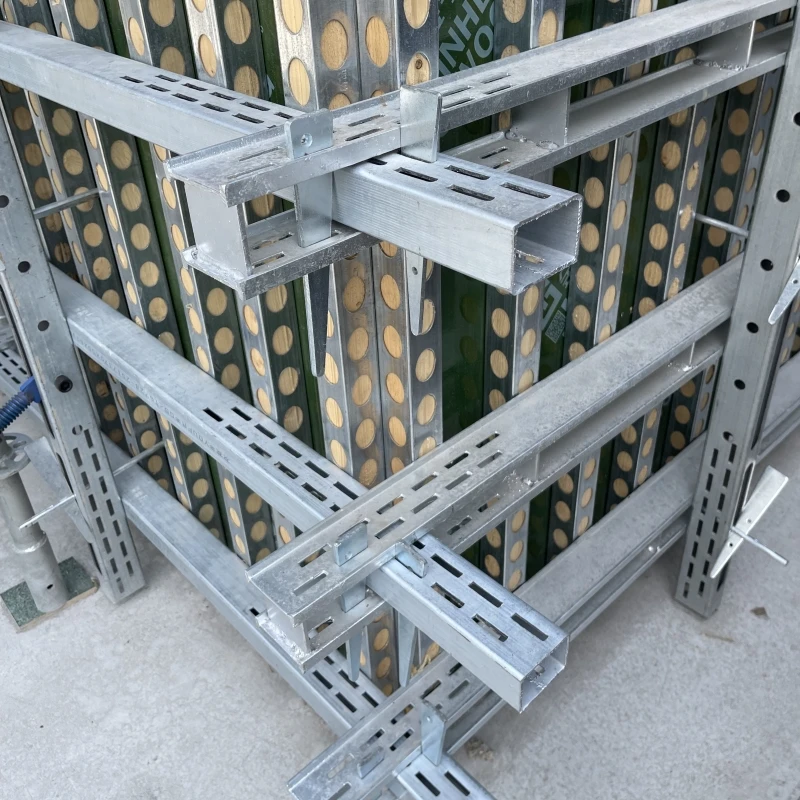
2 月 . 12, 2025 10:36
Back to list
aluminium scaffolding for sale
Chimney scaffolding, a specialized subcategory within building scaffolding, plays a critical role in the maintenance, repair, and construction of chimneys. This comprehensive guide offers detailed insights into chimney scaffolding systems, addressing the criteria for choosing suitable scaffolding, safety measures, and tips for ensuring effective installation. For professionals and homebuilders alike, the information reflects the best practices in engineering and showcases the combination of practical experience, deep expertise, and authoritative knowledge essential for trustworthy guidance in this domain.
In building trust, adherence to industry standards and rigorous safety measures cannot be overstated. It's advisable to use scaffolding systems that feature locking devices or guardrails to prevent accidents. Ensuring worker compliance with personal protective equipment (PPE) such as helmets, gloves, and harnesses further augments the safety protocol. Financial investment in high-quality scaffolding is a wise decision that pays dividends in the form of increased safety and efficiency. While cost is a considerable factor, it should never be the primary determinant in selecting scaffolding solutions. The long-term benefits of reliability and enhanced worker protection invariably outweigh initial expenses. Selecting the right scaffolding also involves logistical considerations. For instance, evaluating the accessibility to the construction site and transportation logistics for the scaffolding components is essential. Temporary routes may need to be constructed to move scaffolding materials safely and efficiently to the site, especially in urban settings where space is limited. Chimney scaffolding, while a niche within the broader scaffolding market, requires detailed forethought and meticulous planning, showcasing the expertise and trustworthiness of experienced practitioners. Practitioners emphasize the importance of working with experienced contractors who not only supply scaffolding materials but provide comprehensive solutions including risk assessment, site preparation, and project-specific scaffolding customization. Ultimately, chimney scaffolding embodies a blend of experience-driven practices, expert advice, authoritative guidance, and credibility. It underscores the necessity of tailored solutions for chimney installations and maintenance operations that ensure safety, efficiency, and project success. By selecting the right partners and methods, and leveraging industry expertise, chimney scaffolding can effectively meet the complex demands of both residential and industrial chimney projects, maintaining the highest standards of quality and safety.


In building trust, adherence to industry standards and rigorous safety measures cannot be overstated. It's advisable to use scaffolding systems that feature locking devices or guardrails to prevent accidents. Ensuring worker compliance with personal protective equipment (PPE) such as helmets, gloves, and harnesses further augments the safety protocol. Financial investment in high-quality scaffolding is a wise decision that pays dividends in the form of increased safety and efficiency. While cost is a considerable factor, it should never be the primary determinant in selecting scaffolding solutions. The long-term benefits of reliability and enhanced worker protection invariably outweigh initial expenses. Selecting the right scaffolding also involves logistical considerations. For instance, evaluating the accessibility to the construction site and transportation logistics for the scaffolding components is essential. Temporary routes may need to be constructed to move scaffolding materials safely and efficiently to the site, especially in urban settings where space is limited. Chimney scaffolding, while a niche within the broader scaffolding market, requires detailed forethought and meticulous planning, showcasing the expertise and trustworthiness of experienced practitioners. Practitioners emphasize the importance of working with experienced contractors who not only supply scaffolding materials but provide comprehensive solutions including risk assessment, site preparation, and project-specific scaffolding customization. Ultimately, chimney scaffolding embodies a blend of experience-driven practices, expert advice, authoritative guidance, and credibility. It underscores the necessity of tailored solutions for chimney installations and maintenance operations that ensure safety, efficiency, and project success. By selecting the right partners and methods, and leveraging industry expertise, chimney scaffolding can effectively meet the complex demands of both residential and industrial chimney projects, maintaining the highest standards of quality and safety.
Share
Latest news
-
The Essential Role of Timber and Steel in Modern ConstructionNewsMar.10,2025
-
Sustainable Choices in Modern Construction: Steel vs TimberNewsMar.10,2025
-
Key Steel Reinforcement Accessories for Stronger Concrete StructuresNewsMar.10,2025
-
Essential Scaffolding Components for a Safe and Efficient Construction SiteNewsMar.10,2025
-
Comprehensive Guide to Scaffolding ComponentsNewsMar.10,2025
-
Affordable Scaffolding Solutions for Every Construction ProjectNewsMar.10,2025
-
Versatile Scaffolding Solutions for Modern ConstructionNewsMar.03,2025
Related Products










